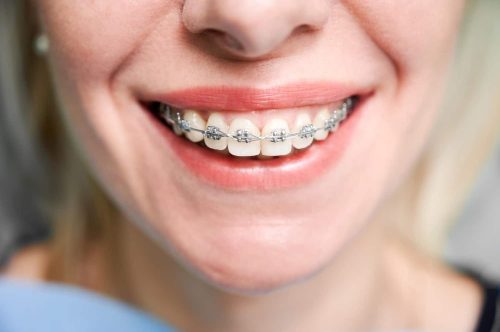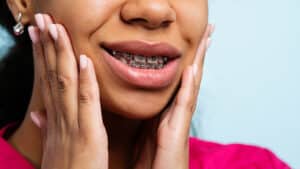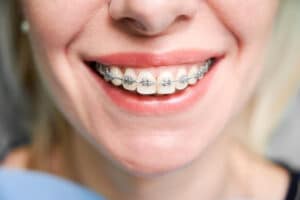Dental braces can feel like a big step, especially if it’s your first time considering them. This guide walks you through everything you need to know, from understanding what braces are to caring for them throughout your journey.
What Are Dental Braces and Why Are They Important?
Dental braces are orthodontic devices that help correct misaligned teeth. They work by applying gentle pressure over time to bring your teeth into a more ideal position. They’re not just about aesthetics; properly aligned teeth can improve chewing, make cleaning easier, and help with overall oral health. Many people notice a boost in confidence, too, once they achieve a straighter smile.
Types of Braces You Can Choose From
When it comes to braces, you have several options, and each type offers unique advantages.
Traditional Metal Braces
These are the most common type of braces, recognizable by their metal brackets and wires. They are effective and generally more affordable compared to other options. While noticeable, modern metal braces have come a long way, and the brackets are smaller than they used to be.
Ceramic Braces
Ceramic braces work like metal braces but use clear or tooth-colored brackets, making them less visible. If you’re looking for a more discreet option without compromising effectiveness, ceramic braces might be the right fit.
Invisalign and Clear Aligners
Clear aligners like Invisalign are gaining popularity, especially among adults. They’re nearly invisible and can be removed while eating or brushing. These aligners are a convenient option for those who prefer minimal change to their lifestyle, but they require discipline since they need to be worn most of the day for effective results.
How to Know If You Need Braces
Braces can address a range of dental issues like crooked teeth, overcrowding, or gaps between teeth. If you notice discomfort while biting or find it challenging to clean your teeth properly, misalignment could be the cause. The best way to determine if braces are necessary is to consult an orthodontist. They will evaluate your bite, jaw, and overall dental health to recommend the most suitable treatment.
What to Expect When Getting Braces
Getting braces is a straightforward process. First, you’ll visit your orthodontist for an assessment and talk about your options. Once you decide on the type of braces, the fitting begins. For traditional braces, this means attaching brackets to your teeth and connecting them with a wire. This process is not painful, though it might take an hour or two.
After braces are fitted, there’ll be adjustment appointments every few weeks. These visits keep your treatment on track and ensure that your teeth are shifting correctly. Some discomfort might occur right after adjustments, but it usually fades within a few days.
Caring for Your Braces Every Day
Braces need proper care to keep both your teeth and the hardware in good shape. Cleaning your braces involves more than regular brushing. Use a soft-bristle brush and an interdental brush to reach between brackets and wires. Flossing becomes more challenging but using floss threaders or special orthodontic floss helps a lot.
When wearing braces, avoid sticky or hard foods. Caramel, gum, or popcorn can damage brackets or get stuck, making cleaning more difficult. Being mindful of your diet helps avoid unnecessary trips to the orthodontist for repairs.
Dealing With Discomfort and Adjustments
Some soreness is common after first getting braces or following an adjustment. Wax is often provided to reduce friction between the brackets and the inside of your cheeks. Over-the-counter pain relievers help manage any discomfort you may feel for the first few days. Sticking to soft foods, like mashed potatoes or yogurt, also helps during this time.
It’s also normal for your teeth to feel loose as they move. This sensation is part of the alignment process, so don’t worry if you experience it. Just remember that discomfort is temporary, and your smile will thank you later.
The Rewards of Wearing Braces
The process of wearing braces is gradual, but the rewards are long-lasting. Besides a straighter smile, properly aligned teeth improve oral hygiene. You’ll find brushing and flossing easier, reducing the risk of cavities and gum disease. Having a corrected bite can also relieve strain on the jaw, reducing the risk of issues like TMJ.
Beyond health benefits, many people find the boost in self-esteem to be a major plus. Knowing that your smile looks good can give you extra confidence in both personal and professional situations.
What Happens After the Braces Come Off
Once your braces come off, it’s crucial to maintain your new smile. Orthodontists typically provide a retainer, which helps keep teeth in their new position. You’ll need to wear your retainer as instructed, often starting with full-time wear before transitioning to night use. Retainers are key to keeping all that hard work in place and avoiding any shifting of your teeth.
Regular dental check-ups also play a role in keeping your smile healthy post-braces. Staying on top of dental visits helps ensure that your teeth and gums remain in good condition.
FAQs for First-Time Braces Wearers
How do braces impact speech?
Braces can cause slight changes in your speech, especially in the first few days after they are put on. You may notice a lisp or difficulty pronouncing certain sounds, but this usually resolves as you get used to them.
Can I play sports while wearing braces?
Yes, you can play sports while wearing braces. It is recommended to wear a mouthguard to protect both your braces and teeth during contact sports. Speak with your orthodontist about the best type of mouthguard for your needs.
What happens if a bracket or wire breaks?
If a bracket or wire breaks, contact your orthodontist as soon as possible to schedule a repair. In the meantime, use orthodontic wax to cover any sharp edges to prevent irritation to your mouth.
Are there any specific toothpaste or brushes I should use?
It’s best to use fluoride toothpaste and a soft-bristle toothbrush. Consider using an interdental brush to help clean around the brackets and wires more thoroughly. Electric toothbrushes can also be helpful in keeping your teeth and braces clean.
Can I still whiten my teeth while wearing braces?
Whitening teeth while wearing braces is generally not recommended. The brackets cover parts of your teeth, so only exposed areas would whiten. It’s best to wait until after your braces are removed for a consistent whitening result.




